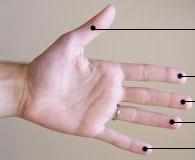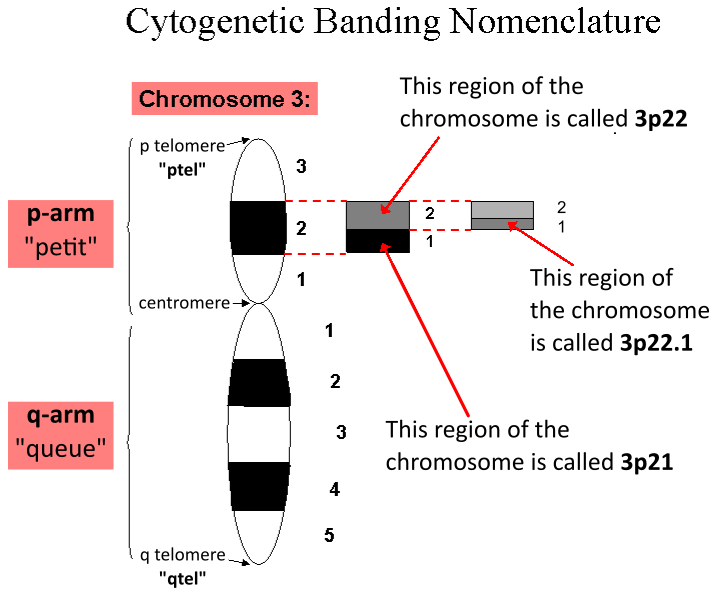|
Syndactyly
Syndactyly is a condition wherein two or more digits are fused together. It occurs normally in some mammals, but is an unusual condition in humans. The term is . Classification Syndactyly can be simple or complex. * In simple syndactyly, adjacent fingers or toes are joined by soft tissue. * In complex syndactyly, the bones of adjacent digits are fused. The kangaroo exhibits complex syndactyly. Syndactyly can be complete or incomplete. * In complete syndactyly, the skin is joined all the way to the tip of the involved digits. * In incomplete syndactyly, the skin is only joined part of the distance to the tip of the involved digits. Complex syndactyly occurs as part of a syndrome (such as Apert syndrome) and typically involves more digits than simple syndactyly. Fenestrated syndactyly, also known as acrosyndactyly or terminal syndactyly, means the skin is joined for most of the digit but in a proximal area there are gaps in the syndactyly with normal skin. This type of synda ... [...More Info...] [...Related Items...] OR: [Wikipedia] [Google] [Baidu] |
Apert Syndrome
Apert syndrome is a form of acrocephalosyndactyly, a congenital disorder characterized by malformations of the skull, face, hands and feet. It is classified as a branchial arch syndrome, affecting the first Pharyngeal arch, branchial (or pharyngeal) arch, the precursor of the maxilla and Human mandible, mandible. Disturbances in the development of the branchial arches in fetal development create lasting and widespread effects. In 1906, Eugène Apert, a French physician, described nine people sharing similar attributes and characteristics. Linguistically, in the term "acrocephalosyndactyly", ''acro'' is Greek language, Greek for "peak", referring to the "peaked" head that is common in the syndrome; ''cephalo'', also from Greek, is a combining form meaning "head"; ''syndactyly'' refers to webbing of fingers and toes. In embryology, the hands and feet have selective cells that die in a process called selective cell death, or apoptosis, causing separation of the digits. In the case ... [...More Info...] [...Related Items...] OR: [Wikipedia] [Google] [Baidu] |
Webbed Toes
Webbed toes is the informal and common name for syndactyly affecting the feet—the fusion of two or more digits of the feet. This is normal in many birds, such as ducks; amphibians, such as frogs; and some mammals, such as kangaroos. In humans it is rare, occurring once in about 2,000 to 2,500 live births: most commonly the second and third toes are webbed (joined by skin and flexible tissue), which can reach partly or almost fully up the toe. Cause The exact cause of the condition is unknown. In some cases, close family members may share this condition. In other cases, no other related persons have this condition. The scientific name for the condition is syndactyly, although this term covers both webbed fingers and webbed toes. Syndactyly occurs when apoptosis or programmed cell death during gestation is absent or incomplete. Webbed toes occur most commonly in the following circumstances: * Syndactyly or familial syndactyly * Down syndrome It is also associated with a numbe ... [...More Info...] [...Related Items...] OR: [Wikipedia] [Google] [Baidu] |
Amniotic Band Syndrome
Constriction ring syndrome (CRS) is a congenital disorder with unknown cause. Because of the unknown cause there are many different, and sometimes incorrect, names. It is a malformation due to intrauterine bands or rings that produce deep grooves in (most commonly anatomical terms of location#Proximal and distal, distal) extremities such as fingers and toes. In rare cases the constriction ring can form around other parts of the fetus and cause amputation or even intrauterine death. The anatomy anatomical terms of location#Proximal and distal, proximal to the site of constriction (or amputation) is developmentally normal. CRS can be associated with other malformations, with club foot being most common. The precise configuration of the bands, lymphedema, and character of the amputations are not predictable and vary with each individual patient. Also, more than one extremity is usually affected, and it is rare for only one ring to present as an isolated malformation with no other manif ... [...More Info...] [...Related Items...] OR: [Wikipedia] [Google] [Baidu] |
Dactyly
In biology, dactyly is the arrangement of digits (fingers and toes) on the hands, feet, or sometimes wings of a tetrapod animal. The term is derived from the Greek word () meaning "finger." Sometimes the suffix "-dactylia" is used. The derived adjectives end with "-dactyl" or "-dactylous." As a normal feature Pentadactyly Pentadactyly (from Greek "five") is the condition of having five digits on each limb. It is traditionally believed that all living tetrapods are descended from an ancestor with a pentadactyl limb, although many species have now lost or transformed some or all of their digits by the process of evolution. However, this viewpoint was challenged by Stephen Jay Gould in his 1991 essay "Eight (or Fewer) Little Piggies," where he pointed out polydactyly in early tetrapods and described the specializations of digit reduction. Despite the individual variations listed below, the relationship is to the original five-digit model. In reptiles, the limbs are pentad ... [...More Info...] [...Related Items...] OR: [Wikipedia] [Google] [Baidu] |
Digit (anatomy)
A digit is one of several most distal parts of a limb, such as fingers or toes, present in many vertebrates. Names Some languages have different names for hand and foot digits (English: respectively "finger" and " toe", German: "Finger" and "Zeh", French: "doigt" and "orteil"). In other languages, e.g. Arabic, Russian, Polish, Spanish, Portuguese, Italian, Czech, Tagalog, Turkish, Bulgarian, and Persian, there are no specific one-word names for fingers and toes; these are called "digit of the hand" or "digit of the foot" instead. In Japanese, yubi (指) can mean either, depending on context. Human digits Humans normally have five digits on each extremity. Each digit is formed by several bones called phalanges, surrounded by soft tissue. Human fingers normally have a nail at the distal phalanx. The phenomenon of polydactyly occurs when extra digits are present; fewer digits than normal are also possible, for instance in ectrodactyly. Whether such a mutation can ... [...More Info...] [...Related Items...] OR: [Wikipedia] [Google] [Baidu] |
Greig Syndrome2
Greig may refer to: People * Greig (name) Places United States * Greig, New York, a town in Lewis County, New York * Cape Greig in Alaska Canada * Greig Lake (Saskatchewan), a lake in Saskatchewan * Greig Lake (Vancouver Island), a lake in British Columbia Other uses * David Greig (supermarket), a former UK supermarket chain, now part of the Co-operative Group * Greig cephalopolysyndactyly syndrome * Greig City Academy Greig City Academy is a mixed-sex secondary school in the London borough of Haringey. It has around 1,100 pupils on its roll. As well as a busy main school, the Academy includes a thriving Sixth Form with links to Russell Group and other uni ... See also * Grieg (other) {{disambig ... [...More Info...] [...Related Items...] OR: [Wikipedia] [Google] [Baidu] |
Apoptosis
Apoptosis (from ) is a form of programmed cell death that occurs in multicellular organisms and in some eukaryotic, single-celled microorganisms such as yeast. Biochemistry, Biochemical events lead to characteristic cell changes (Morphology (biology), morphology) and death. These changes include Bleb (cell biology), blebbing, Plasmolysis, cell shrinkage, Karyorrhexis, nuclear fragmentation, Pyknosis, chromatin condensation, Apoptotic DNA fragmentation, DNA fragmentation, and mRNA decay. The average adult human loses 50 to 70 1,000,000,000, billion cells each day due to apoptosis. For the average human child between 8 and 14 years old, each day the approximate loss is 20 to 30 billion cells. In contrast to necrosis, which is a form of traumatic cell death that results from acute cellular injury, apoptosis is a highly regulated and controlled process that confers advantages during an organism's life cycle. For example, the separation of fingers and toes in a developing human embryo ... [...More Info...] [...Related Items...] OR: [Wikipedia] [Google] [Baidu] |
Sonic Hedgehog
Sonic hedgehog protein (SHH) is a major signaling molecule of embryonic development in humans and animals, encoded by the ''SHH'' gene. This signaling molecule is key in regulating embryonic morphogenesis in all animals. SHH controls organogenesis and the organization of the central nervous system, limbs, digits and many other parts of the body. Sonic hedgehog is a morphogen that patterns the developing embryo using a concentration gradient characterized by the French flag model. This model has a non-uniform distribution of SHH molecules which governs different cell fates according to concentration. Mutations in this gene can cause holoprosencephaly, a failure of splitting in the cerebral hemispheres, as demonstrated in an experiment using SHH knock-out mice in which the forebrain midline failed to develop and instead only a single fused telencephalic vesicle resulted. Sonic hedgehog still plays a role in differentiation, proliferation, and maintenance of adult tissues. Abno ... [...More Info...] [...Related Items...] OR: [Wikipedia] [Google] [Baidu] |
Locus (genetics)
In genetics, a locus (: loci) is a specific, fixed position on a chromosome where a particular gene or genetic marker is located. Each chromosome carries many genes, with each gene occupying a different position or locus; in humans, the total number of Human genome#Coding sequences (protein-coding genes), protein-coding genes in a complete haploid set of 23 chromosomes is estimated at 19,000–20,000. Genes may possess multiple variants known as alleles, and an allele may also be said to reside at a particular locus. Diploid and polyploid cells whose chromosomes have the same allele at a given locus are called homozygote, homozygous with respect to that locus, while those that have different alleles at a given locus are called heterozygote, heterozygous. The ordered list of loci known for a particular genome is called a gene map. Gene mapping is the process of determining the specific locus or loci responsible for producing a particular phenotype or biological trait. Association ma ... [...More Info...] [...Related Items...] OR: [Wikipedia] [Google] [Baidu] |
Mammal
A mammal () is a vertebrate animal of the Class (biology), class Mammalia (). Mammals are characterised by the presence of milk-producing mammary glands for feeding their young, a broad neocortex region of the brain, fur or hair, and three Evolution of mammalian auditory ossicles, middle ear bones. These characteristics distinguish them from reptiles and birds, from which their ancestors Genetic divergence, diverged in the Carboniferous Period over 300 million years ago. Around 6,640 Neontology#Extant taxon, extant species of mammals have been described and divided into 27 Order (biology), orders. The study of mammals is called mammalogy. The largest orders of mammals, by number of species, are the rodents, bats, and eulipotyphlans (including hedgehogs, Mole (animal), moles and shrews). The next three are the primates (including humans, monkeys and lemurs), the Artiodactyl, even-toed ungulates (including pigs, camels, and whales), and the Carnivora (including Felidae, ... [...More Info...] [...Related Items...] OR: [Wikipedia] [Google] [Baidu] |
Metacarpus
In human anatomy, the metacarpal bones or metacarpus, also known as the "palm bones", are the appendicular skeleton, appendicular bones that form the intermediate part of the hand between the phalanges (fingers) and the carpal bones (wrist, wrist bones), which joint, articulate with the forearm. The metacarpal bones are homologous to the metatarsal bones in the foot. Structure The metacarpals form a transverse arch to which the rigid row of distal carpal bones are fixed. The peripheral metacarpals (those of the thumb and little finger) form the sides of the cup of the palmar gutter and as they are brought together they deepen this concavity. The index metacarpal is the most firmly fixed, while the thumb metacarpal articulates with the trapezium and acts independently from the others. The middle metacarpals are tightly united to the carpus by intrinsic interlocking bone elements at their bases. The ring metacarpal is somewhat more mobile while the fifth metacarpal is semi-indepen ... [...More Info...] [...Related Items...] OR: [Wikipedia] [Google] [Baidu] |






